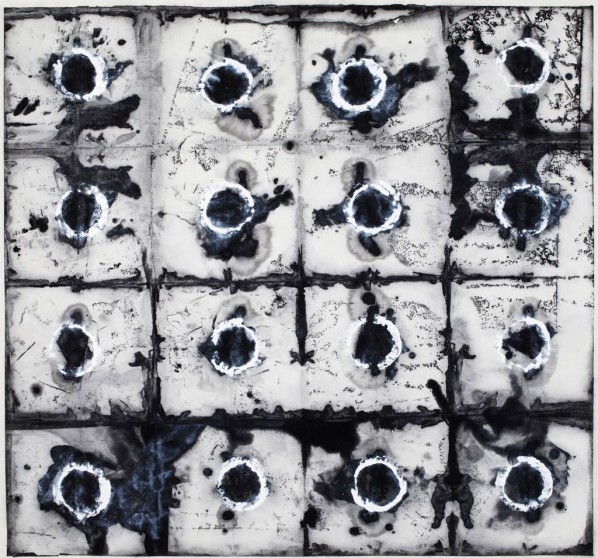
Sponsored by CAFA Art Museum and Today Art museum, Li Gang’s experimental exhibition of ink painting entitled “Originality and Reproduction in Chinese Painting and Calligraphy” is going to open at Today Art Museum on June 3rd. It is one of his important solo shows since he came to Beijing in 2009 which also reflects his ceaseless thinking and practices in experimental ink painting.
[gallery link="file" orderby="title"]
Curator Pi Li stated that they gave its name two considerations: one is that Li Gang has taken “printing” as his major structural practice and these works have a common appearance by utilization of physical rubbing or regular printing and dyeing through folded rice paper, which to some extent is an extended sense of the “conveying and changing by patterned representation”; the other is that back in the fifth century AD, the Chinese figure painter and critic Hsieh Ho in his time formulated six rules for painting, which became known as his "Six Principles of Painting". The last of them is "to transmit by copying". Unlike in the West, which often looks down on rote copying, in China this laid a foundation for imitating the styles and works of the old masters as a way to preserve the past and to provide inspiration in art. In practice, it was actually quite similar to writing a formal essay in the days before word processing. In the initial stages of writing, you made additions and deletions as you went along. After the draft had been revised and completed, you then copied it exactly for a clean, final version. In painting, when doing a detailed or complex work with many figures, for example, it was almost essential to make all the revisions on a rough draft before formally transferring it to the final work. Even in theories of ancient Chinese paintings, “Transmit by Copying Chinese Painting and Calligraphy” is an ever developing concept. It can be comprehended as “imitating”, along with the emergence of freehand brushwork in traditional Chinese painting and it turns from “neat imitating” to “freehand imitating” which formulated a kind of “translation”. Taking “printing” as his primary means, Li Gang “translated” the material world on its texture through the intermediary of readymade, thus he formed some images with an extremely “spiritual” sense. Pi Li believes that the so-called “experimental ink painting” created by Li Gang can be taken as the continuation of the inner context deeply rooted in Chinese wash painting. It does not simply reflect in water and ink but embodies the conversion between the material, texture, images, pictures and the spiritual world. This kind of conversion is both a methodology and a concept. Transmit by Copying Chinese Painting and Calligraphy, for Li Gang is no longer the flow from the self-awareness to image but the transformation among the outside world (ready-made), the consciousness (ideas) and images (abstract language). His works are “koan” in this industrial era, therefore being endowed with a more contemporary temperament.
About the Exhibition
Academic Chair: Wang Huangsheng
Curator: Pi Li
Opening: June 3rd, 3:30pm
Duration: June 3rd—10th, 2012
Venue: 3rd floor of Today Art Museum, Beijing




























